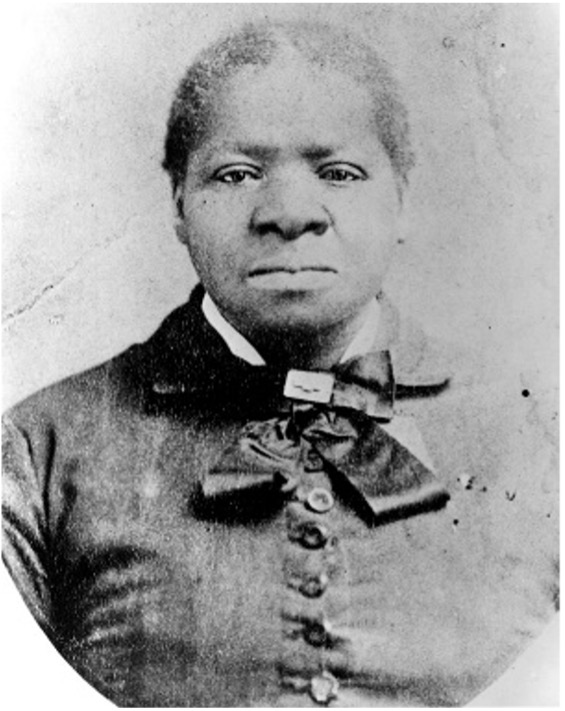
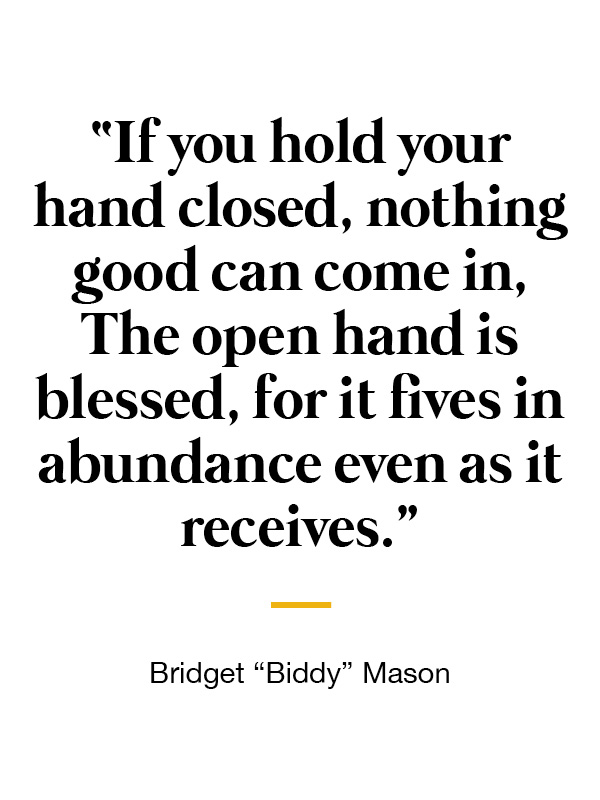
Bridget "Biddy" Mason was born into slavery in the Deep South, walked to California as part of a pioneer caravan, fought for her freedom in court, and died a wealthy real-estate investor in Los Angeles. Her perseverance enabled her to find freedom and financial success, ultimately helping numerous others through her philanthropic work.
Mason was born into slavery in Mississippi, 1818. She was then owned by slaveholders in Georgia and South Carolina before being returned to Mississippi. Mason’s last enslaver was a Mormon convert who decided to journey to the Mormon community being established in what would become Salt Lake City, Utah. At this time Utah was still a part of Mexico. In 1848, Mason, then 30 years old, walked 1,700 miles behind a 300-wagon caravan destined for the Salt Lake Valley. Along the route, Mason was responsible for setting up and breaking camp; cooking the meals; herding cattle; and serving as a midwife. She also took care of her three young daughters, aged 10, 4, and a newborn.
In 1851, Mason’s enslaver moved once again, this time to California. Despite slavery being illegal in the new state, Mason and other enslaved people were taken along as property. Along the way, Mason met Charles H. and Elizabeth Flake Rowan, a free Black couple. The Rowan’s, and others, informed Mason of California’s free state status and urged Mason to legally contest her enslavement.
Mason Earns Her Freedom
After spending five years enslaved in California, Mason took legal action for her freedom. Mason’s enslavers attempted to relocate Mason and her family to Texas, where slavery was legal. Mason’s free Black friends intervened by alerting the local sheriff’s office, who took Mason and her family into protective custody. Mason’s case for freedom was sent to the courts, where Black people were not allowed to testify. However, events led to Mason stating her case in front of the judge. On January 21, 1856, in the case of Mason v. Smith, Los Angeles District Judge approved Mason’s petition. The ruling freed Mason and thirteen members of her extended family. This was the first ruling of its kind in California and set a precedent for future cases that came before California courts.
Mason, then 38 years old, moved her family to the growing town of Los Angeles. Despite California’s free state status, it was far from being a safe place for Black people. Many slave owners ignored the law, and there were bounty hunters who traveled the area. They would kidnap free Black people and try to return them to their former owners.
The Entrepreneur
Mason never learned to read or write, but from older enslaved women she learned traditional healing methods, herbal remedies, and midwifery. These skills got her work as a nurse and midwife with a local doctor. She was very skilled in her work and spoke Spanish fluently, which was very helpful to a local doctor who saw patients of all backgrounds. Mason’s reputation as a healer and midwife allowed her to open her own business later on.
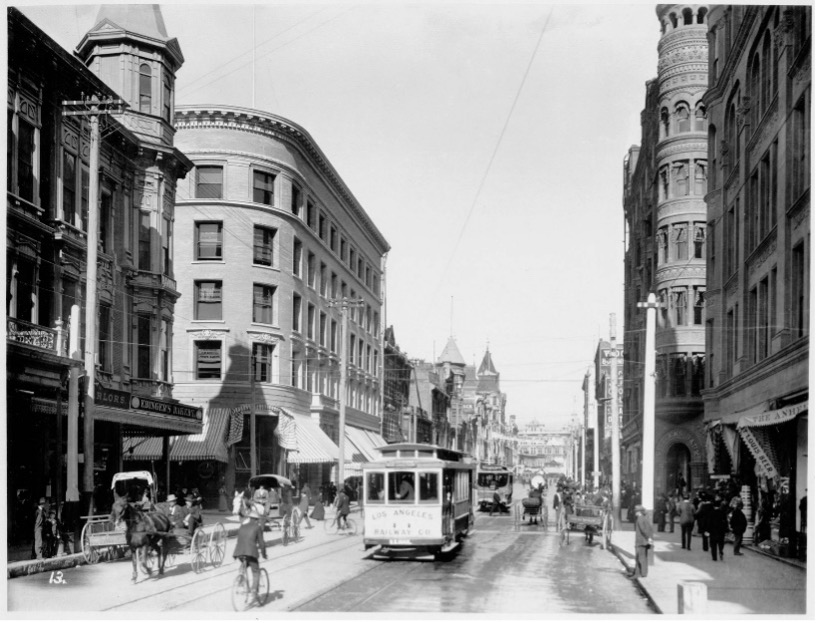
Spring Street seen from Third, appx. 1903. When Biddy Mason bought her first piece of property, she established her family homestead on the outskirts of town on Spring Street. When she died in 1891, Spring Street was the heart of Los Angeles’ thriving financial center. Photo courtesy of Huntington Digital Library/KCRW.
Mason, a savvy businesswoman, saved her earnings and made sound investment decisions in the rapidly growing town of Los Angeles. In 1866, Biddy Mason made her first land purchase at 48 years old. She paid $250 for a lot between 3rd and 4th on Spring Street. Spring connected with Main Street and was an important thoroughfare. Some accounts indicate that land investment was a major focus of her life. More reliable accounts show that it was likely that she was securing her family’s future by owning land on which they could live.
Two years later, she purchased more land. At that time, this area was considered “out of town.” Today it is in the heart of the older part of the city. In 1875, Mason sold the north half of the Spring Street property to K.H. Jones and Charles M. Wright for $1500. She sold another lot on Olive Street in 1884 for $2800. At that time, she also had the Spring Street parcel deeded to her grandsons, Robert and Henry. Her daughter, Ellen, Robert’s wife, also was given land to live on until she died. As the town grew, her property became prime urban lots, and she accumulated a fortune of nearly $300,000. That equates to approximately $10 million by today’s standards according to the CPI inflation calculator.
The Philanthropist
Biddy was very generous to all around her. She used her wealth to become a philanthropist for the entire L.A. community. She gave food and shelter to poor people of all races, donated to churches attended by both Black and white, and visited prison inmates with gifts and aid. Needy people often lined up for medical help in front of her house on Spring Street. Mason was instrumental in founding a traveler’s aid center and an elementary school for Black children. The opportunity to worship as they pleased was important to Black people in California. In 1872, Biddy and her son-in-law, Charles Owens, founded and financed the Los Angeles branch of the First African Methodist Episcopal Church. This was the first Black church in Los Angeles.

First African Methodist Episcopal Church Building- Destroyed by fire in 1972. Source: bigorangelandmarks.blogspot.com
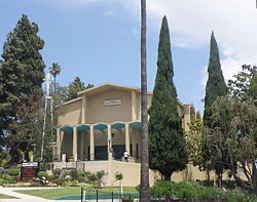
The First African Methodist Episcopal Church of Los Angeles (First A.M.E. or FAME) is a megachurch in Los Angeles, California, United States, part of the African Methodist Episcopal (AME) Church. It is the oldest church founded by African Americans in Los Angeles, California, dating to 1872.
Bridget “Biddy” Mason died in L.A. on January 15, 1891 at the age of 73. She was buried in an unmarked grave in Evergreen Cemetery. On March 27, 1988, the mayor of L.A. and members of the church she founded held a ceremony, during which her grave was marked with a tombstone.
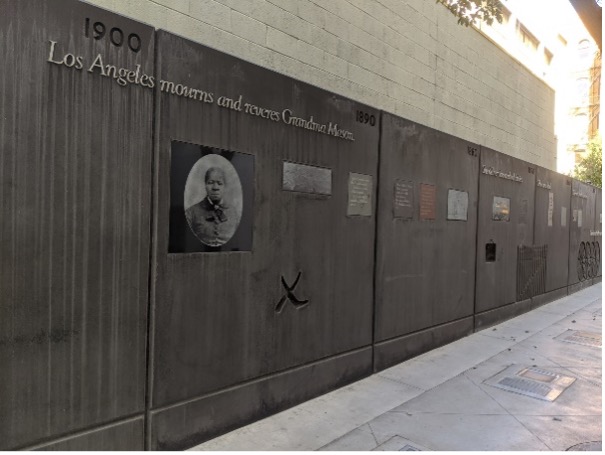
Biddy Mason Memorial Park is located at 333 S. Spring Street. Its featured centerpiece is an 80-foot-long poured concrete wall by artist Sheila Levrant de Bretteville, a timeline of Biddy Mason’s life illustrated by impressions of objects and simple text. Source: KCRW
Mason’s Legacy
Her philanthropic efforts helped create and sustain African-American institutions in the city and shaped the city’s overall civic life for future generations. A Biddy Mason Memorial Park in downtown LA includes a timeline, detailing the history of a woman who, after spending nearly half her life in slavery, used her freedom to transform the burgeoning city for the better.
Learn more about Bridget “Biddy” Mason:
- https://www.nps.gov/people/biddymason.htm
- https://americacomesalive.com/bridget-biddy-mason-1818-1891-businesswoman-and-philanthropist/
- https://www.searchablemuseum.com/bridget-biddy-mason-2
Sources:
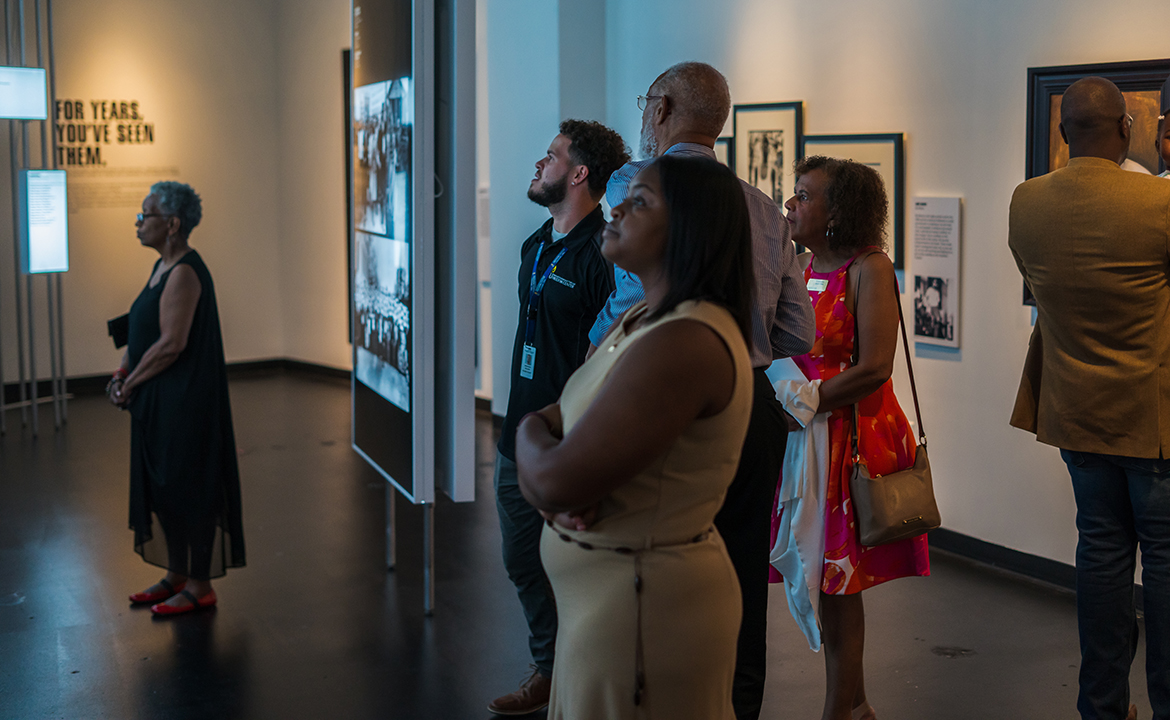
Freedom Heroes
Discover more courageous individuals that have taken a stand for freedom and justice.